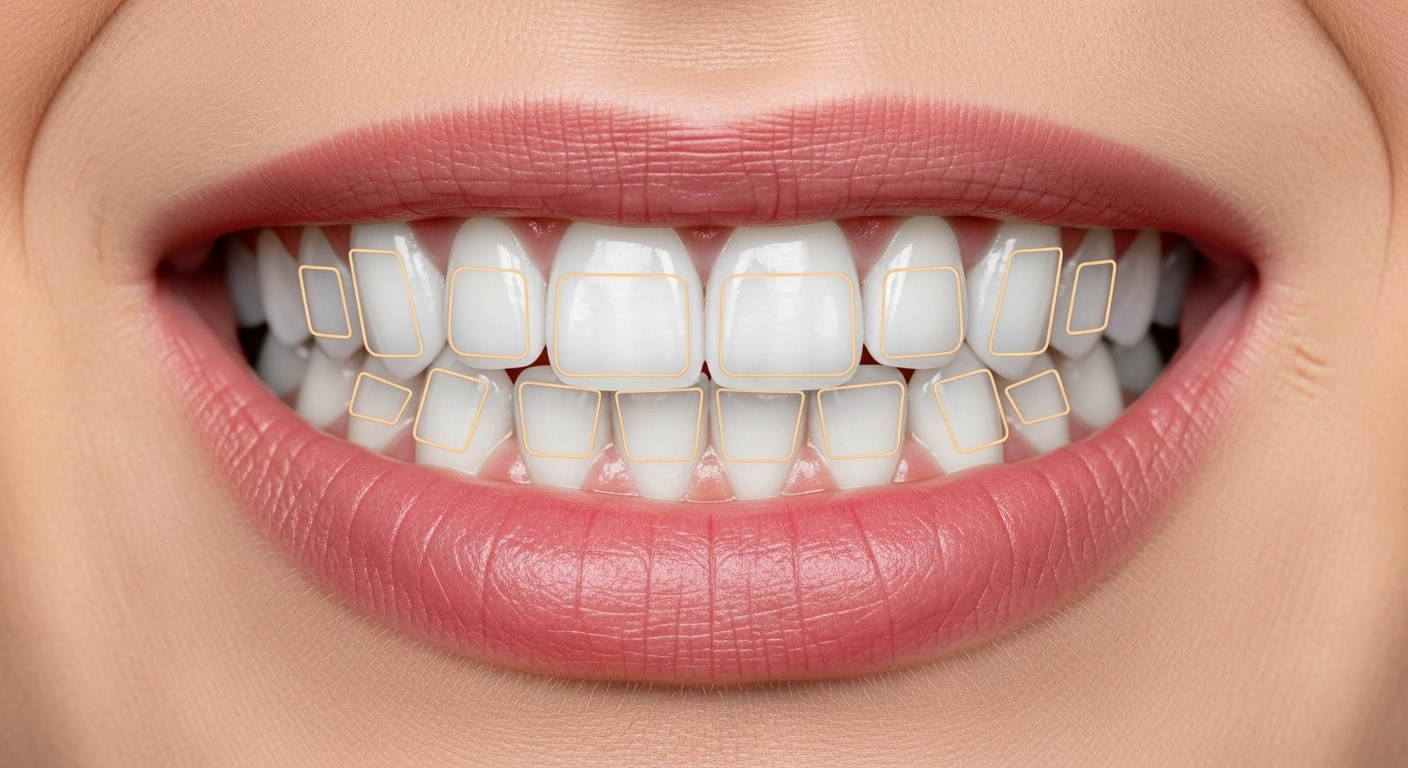Invisalign Buttons Explained: A Guide to SmartForce Attachments
If your Invisalign provider mentioned "attachments" or "buttons" during your consultation, you might be curious. Far from being a hassle, these tiny bumps are a critical component of your treatment's success, enabling difficult tooth movements to help you achieve a flawless smile.
What Exactly Are Invisalign Attachments?
An attachment, officially known as a SmartForce® feature, is a tiny droplet of composite resin (the same material used in tooth-colored dental fillings) that is matched to your tooth's natural shade. It is bonded temporarily to the surface of specific teeth for the entire treatment period. These attachments are engineered in various shapes and sizes—such as rectangles, squares, or circles—each designed for a particular type of tooth movement.
What Do Invisalign Attachments Do?
Think of attachments as "grips" or anchor points. They provide the clear aligner with a surface to hold onto, allowing it to apply precise and targeted forces to a tooth. Without these attachments, the naturally smooth surface of some teeth would not allow for certain complex adjustments.
Their function is vital for:
- Executing rotations on teeth that are not correctly oriented.
- Performing extrusions or intrusions (which means moving a tooth downward or upward in the gumline).
- Guiding the movement of the tooth's root, not just the visible crown.
- Maximizing the force from the aligner to ensure faster and more predictable results.
How Are Attachments Put On?
The application of attachments is a straightforward, quick, and entirely painless process.
- Your provider first prepares the tooth's enamel to ensure a secure bond.
- A specialized template, which looks like a clear aligner with small empty pockets, is used.
- The provider fills these pockets in the template with the liquid composite material.
- The template is then fitted onto your teeth, and a curing light (a blue light) is used to harden the composite in seconds.
- Once the template is lifted away, the custom-shaped attachments are firmly bonded to your teeth.
Common Questions About Invisalign Attachments
Are Invisalign Attachments Noticeable?
Attachments are engineered for maximum discretion. Being the same color as your natural teeth, they are difficult to spot. While you are wearing your aligners, they become virtually invisible. When the aligners are out, you might feel them with your tongue and they may be slightly visible upon close inspection, but they are significantly less conspicuous than traditional braces.
What If an Attachment Comes Off?
This can occasionally happen. There is no need to panic, as it is not a dental emergency. Simply continue wearing your aligners as prescribed and call your provider's office to inform them. They will arrange a brief appointment to re-bond it. It's best not to delay, as a missing attachment can disrupt the intended movement for that specific tooth.
How and When Are the Attachments Taken Off?
Attachments are removed once the active phase of your treatment is complete, typically right before you are scanned for your final retainers. Your provider will use a special polishing instrument to gently buff the attachments off the tooth. The enamel is then polished to remove any leftover composite material. The entire procedure is fast, painless, and causes no damage to your tooth enamel.
Conclusion: A Key Element for a Successful Outcome
Invisalign attachments should not be viewed as an inconvenience but as a significant technological asset. Their presence indicates that your treatment plan is highly customized and fine-tuned to deliver the best possible outcome. It is precisely because of innovations like these that Invisalign can effectively manage increasingly complex cases of teeth straightening.
Ready to start your Invisalign journey?
Find a certified Invisalign provider near you using our interactive map of orthodontists in the US.
Find a Provider
